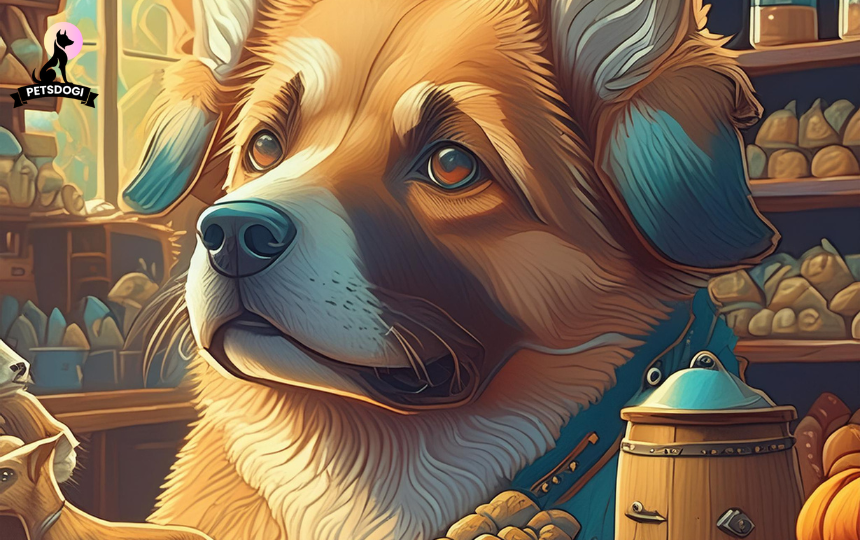Welcome to the definitive resource for selecting the ideal dog friend for your needs and way of life. Choosing the correct dog demands careful consideration of many different aspects and goes beyond simple whims. This post offers a clear road map to help you make decisions, from figuring out your tastes and living conditions to learning about the subtle differences between breeds. Regardless of whether you’re a seasoned pet parent or hoping to grow your family, these tips will assist you in making a rewarding decision. Together, let’s go out on this quest to locate the best four-legged companion for your particular requirements and tastes..
Lifestyle Factors to Take Into Account
For a peaceful friendship, choosing the correct dog requires matching your lifestyle with your dog’s needs. Let’s dissect the important factors:
2.1 Choose a Dog That Fits Your Way of Life
Consider assessing your everyday schedule and habits before introducing a dog into your house. Think about the following:
2.1.1 What Sort of Area Are You Able to Provide the Dog?
A huge, high-energy breed might not be the greatest choice if you live in a small flat. Likewise, an energetic and lively breed can be a perfect fit if you have plenty of outside area.
2.1.2 Who Cohabits With You?
Consider whether family members or housemates are present. While some dogs may prefer a quieter environment, others may be more social and family-oriented.
2.1.3 What Is The Estimated Time You Will Spend With Your Dog?
Dogs are gregarious creatures that enjoy company. Examine your daily itinerary to make sure you have adequate time for bonding, playing, and exercising.
2.1.4 How Often Will Your Dog Exercise?
Exercise requirements vary throughout breeds. Whether you’re a casual walker or an enthusiastic runner, make sure the breed you select is appropriate for your level of exercise.
2.1.5 How Much Willingness Do You Have to Put Into Grooming?
Breed-specific grooming requirements differ greatly. Think about how much you can handle when it comes to grooming, from routine brushing to the occasional trip to the pro.
2.2 Seven Pointers for Selecting the Ideal Dog for Your Way of Life

Look more closely at the details of your lifestyle with these seven suggestions, going beyond space and daily schedules:
2.2.1 Years
Think on the dog’s age that best suits your lifestyle: an energetic adult, a laid-back senior, or a playful youngster.
2.2.2 Dimensions and Form
Take into account how big your yard and house are. Smaller breeds might do better in smaller living arrangements.
2.2.3 Energy Level Match your own energy level with that of the dog. While more laid-back breeds could be a better fit for a calmer lifestyle, high-energy dogs thrive on action.
2.2.4 Trainability and Intelligence
Considering your preferences and the amount of time you have available for training, assess the dog’s intelligence and trainability.
2.2.5 Instructional Needs
Recognize the training requirements of the breed you have selected and determine if you are capable of fulfilling them.
2.2.6 Background
Think about the dog’s history, particularly if you plan to adopt. Gaining knowledge of their past might help you understand their demands and actions.
2.2.7 Unknown pedigree or purebred
Choose whether you are open to the distinctive qualities of mixed breeds or prefer a purebred dog with predictable traits.
2.3 Five Things You Should Take Into Account
To guarantee a smooth transition of a new puppy into your life, consider following five other factors:
2.3.1 Your Home’s Dimensions and Design
Think about how well your dog’s physical environment will suit their size and activity level.
2.3.2 The Preferences of Family Members
Take into consideration the comfort zones and inclinations of all family members, particularly if there are kids or other pets.
2.3.3 Your Way of Life
Examine your job schedule, social schedule, and daily routines to make sure they suit your dog’s demands.
2.3.4 Your Preferences
Identify what you want a dog to perform for you in your life: be your peaceful indoor buddy or your adventure partner in the great outdoors.
2.3.5 Your Past with Pets, Including Dogs
It can affect your capacity to deal with particular breeds or habits, so think about your past experiences with dogs and other pets.
Selecting the Appropriate Breed
In order to choose the best dog breed, one must go deeper into the particular qualities, attributes, and factors that are particular to each breed. Now let’s examine the key components of this procedure:
3.1 Where to Look for Your Dream Dog
Knowing where to look for your potential furry friend is essential before settling on a certain breed. Even if there are many possibilities, caution is necessary, particularly when purchasing a puppy.
3.1.1 Word of caution: Do not purchase a puppy online or from a pet store.
Although buying a puppy online or from a pet store may seem convenient, there are frequently risks involved. There may be dishonest breeding methods and possible health risks. Instead, to guarantee the welfare of your new friend, think about trustworthy breeders, rescue groups, or adoption agencies.
3.2 Thorough Overview of Dog Breeds
A thorough grasp of each breed’s traits is necessary before delving into the realm of dog breeds. This book will assist you in navigating this complex terrain.
3.2.1 Dimensions
Think about the dog breed’s size, which can range from tiny to enormous. Make sure it complements your living area and style.
3.2.2 Degree of Activity
Determine how active the various breeds are. While some dogs enjoy more leisurely pastimes, others thrive on more strenuous activity.
3.2.3 Upkeep of the Physical Structure
Recognize the different breeds’ needs for grooming. While some dogs’ coats require little upkeep, others may require regular brushing and grooming.
3.2.4 The age
Examine the many dog life stages, such as those of puppies, adults, and senior dogs. Every step has its own distinct set of criteria and qualities.
3.2.5 Animal Type
Consider the temperament, trainability, and suitability for families or individuals of a certain breed.
3.3 Selecting a Purebred Dog
In order to assure a healthy and well-mannered companion, choosing a purebred dog requires significant thought and research.
3.3.1 Pick the Appropriate Breeder
Select a trustworthy breeder who puts their pets’ health and welfare first. A conscientious breeder will furnish proof of the dog’s immunizations, genetic examinations, and general health.
3.3.2 Pose Questions to Your Breeder
Talk to the breeder to learn more about the history, temperament, and possible health issues of the dog. Establishing an open and trustworthy friendship requires this conversation.
3.4 Selecting an Older or Rescue Dog
Adopting an older dog or rescue is a noble decision, but it has its own set of issues.
3.4.1 Selecting the Appropriate Rescue Team
Find trustworthy rescue organizations that put their dogs’ rehabilitation and well-being first by doing some research.
3.4.2 Get to Know the Dog
Learn as much as you can about the dog’s background, habits, and possible problems. This information guarantees a more seamless transfer to their new residence.
3.4.3 Conduct Research
No matter how old the dog is, take the time to learn about their requirements, tastes, and any possible behavioural problems. The groundwork for a successful adoption is laid by this preparation.
You’ll be well on your way to having a furry buddy that not only matches your lifestyle but also fills your life with endless joy and friendship if you carefully weigh these factors and choose the proper breed.
Crucial Advice for Selecting the Ideal Dog
Choosing the ideal dog friend requires planning in order to guarantee a happy partnership.
The following are crucial pointers to help you make your decision:
4.1 Understanding Your Compatibility
4.1.1 Do We Make a Good Match?
Determine whether you and the potential dog are compatible before committing. Think on your tastes, way of life, and the particular requirements of the breed of dog.
4.1.2 Create a List
Make a note of all the things you expect, such as size, energy level, temperament, and grooming needs. This choosing process checklist will function as a useful guide.
4.2 Acknowledging Individual Variations
4.2.1 No Single Solution Fits All
Recognize that every dog, regardless of breed, is different. Take into account people’s personalities, vigor, and suitability for your way of life.
4.3 Getting Ready for Your Duties
4.3.1 Is Training Required for Your Dog?
Prepare to put in a lot of time and energy training your new friend. Examine the breed’s training needs and make sure you are able to meet them.
4.3.2 Have the Money Ready to Cover Veterinary Bills
Having a dog has some medical obligations. To give your pet the finest care possible, save aside money for necessary emergencies, immunizations, and routine veterinary treatment.
4.4 Selecting the Breed
4.4.1 Are You Looking for a Mutt or a Purebred Dog?
Think about the benefits and factors pertaining to both purebred and mixed-breed dogs. Purebreds frequently have predictable traits, while mixed breeds might have a special mix of qualities.
4.5 Evaluating Extended-Term Devotion
Selecting a dog is a long-term commitment that needs to be well thought through in terms of the duties. Make sure you’re prepared for the years of love, care, and companionship that come with owning a dog.
These pointers will help you make a more informed decision so that your dog will not only suit your lifestyle but also grow to be a beloved member of your family. Recall that making the right decision results in a lifetime of happiness, devotion, and unwavering love.
Family-Centered Perspectives
Choosing a dog that fits into your family well requires knowing the elements that go into creating a happy, long-lasting relationship. Let’s examine some issues related to families:
5.1 Dimensions Are Important
Think about how the dog’s size affects the dynamics of your family. Depending on the ages and tastes of the family members, different sizes can be better.
5.2 Energy or Activity Level Determine whether the dog breed’s energy level corresponds with your family’s general level of activity.
While certain breeds enjoy a more laid-back atmosphere, others do well in dynamic households.
5.3 Temperament of Breed
Every breed has characteristics unique to it. Choose a breed that is well-known for getting along with families based on your research, especially if you have kids or other pets.
5.4 Hypersensitivity
Think about any family members that have allergies. Certain dog breeds are more suitable for sensitive homes since they are hypoallergenic.
5.5 Age-Related Issues
Evaluate the dog’s age in light of your family’s dynamics. While older dogs can be a better option for families looking for a calmer companion, puppies might be excellent additions to active households.
5.6 Budget Consider the monetary costs associated with owning a dog.
There are other costs associated with owning a dog, such as food, veterinarian care, grooming, and emergency situations. Make sure your spending plan fits the obligations that come with having a pet.
Conclusion:
To sum up, the process of selecting the ideal dog is a deliberate and fulfilling one that entails taking into account a number of variables to guarantee a happy partnership. Understanding your preferences, way of life, and family dynamics will help you make an informed choice that will result in a satisfying friendship.
The process of selecting the ideal canine companion is fascinating and fulfilling, involving everything from researching various breeds and adoption possibilities to realizing the duties and rewards of dog ownership. Recall that a well-matched dog enriches your life with unending joy, devotion, and love. They also become an essential member of your family and a cherished pet. Accept the process of selecting a dog, and I hope you and your new four-legged friend have many happy years together.




